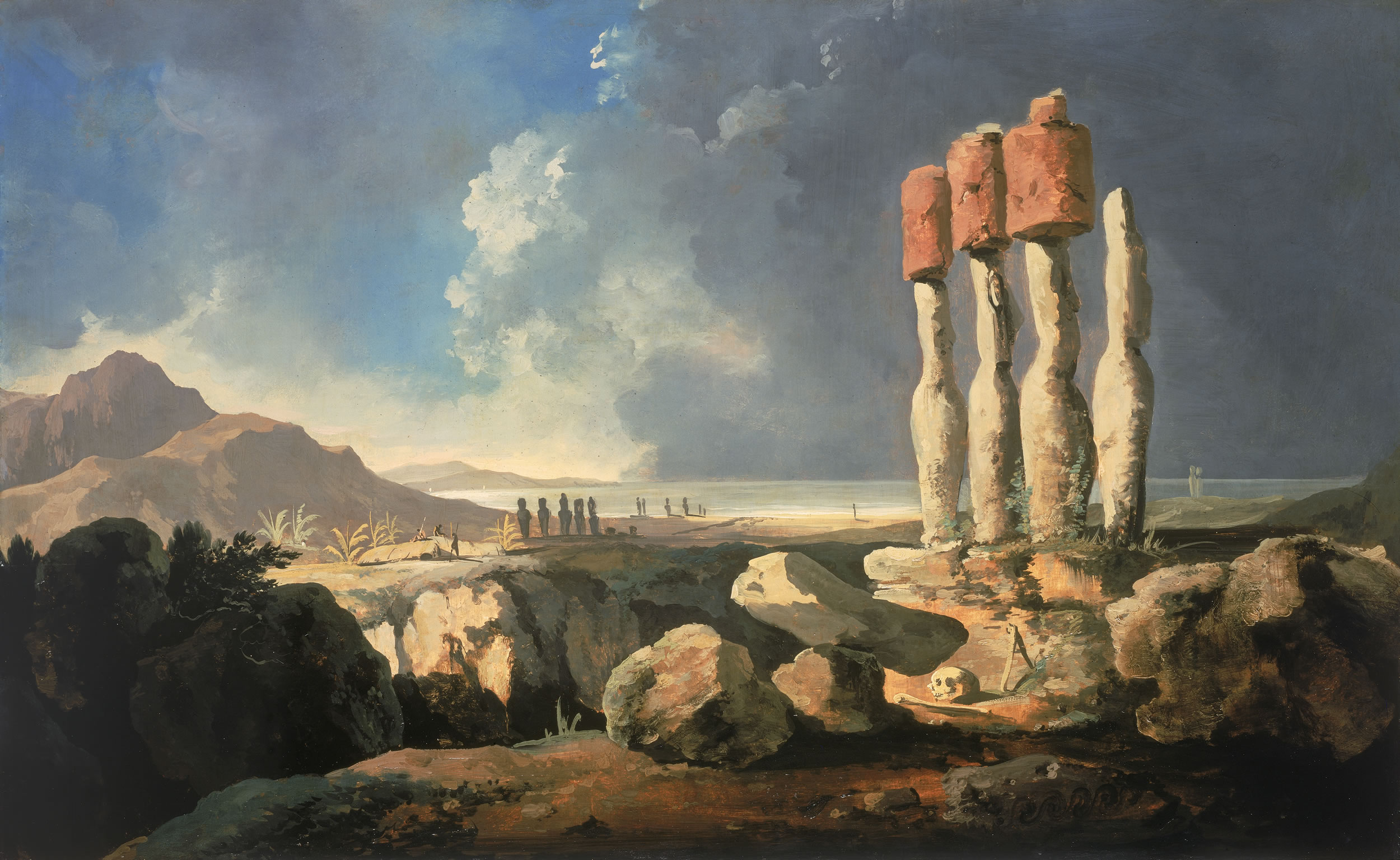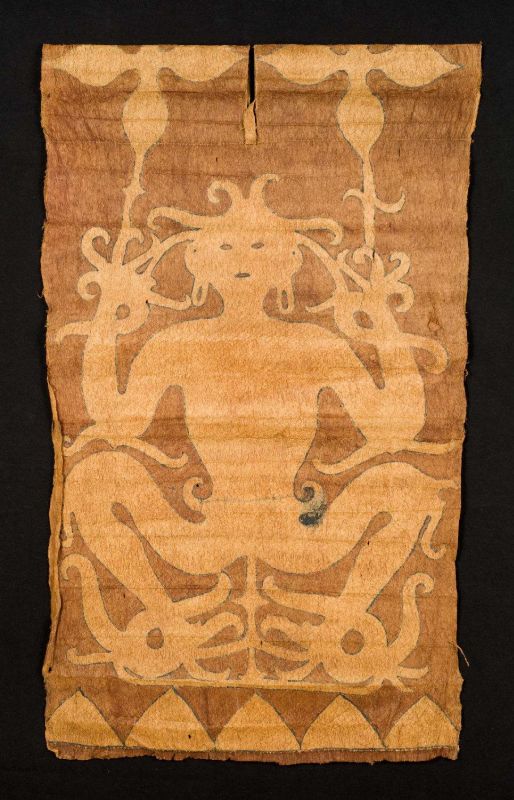|
Rongorongo
Rongorongo ( or ; Rapa Nui: ) is a system of glyphs discovered in the 19th century on Easter Island that has the appearance of writing or proto-writing. Numerous attempts at decipherment have been made, but none have been successful. Although some calendrical and what might prove to be genealogical information has been identified, none of the glyphs can actually be read. If rongorongo does prove to be writing and to be an independent invention, it would be one of very few inventions of writing in human history. Two dozen wooden objects bearing rongorongo inscriptions, some heavily weathered, burned, or otherwise damaged, were collected in the late 19th century and are now scattered in museums and private collections. None remain on Easter Island. The objects are mostly tablets shaped from irregular pieces of wood, sometimes driftwood, but include a chieftain's staff, a '' tangata manu'' statuette, and two '' reimiro'' ornaments. There are also a few petroglyphs which may incl ... [...More Info...] [...Related Items...] OR: [Wikipedia] [Google] [Baidu] |
Decipherment Of Rongorongo
There have been numerous attempts to decipher the ''rongorongo'' script of Easter Island since its discovery in the late nineteenth century. As with most undeciphered scripts, many of the proposals have been fanciful. Apart from a portion of one tablet which has been shown to deal with a lunar calendar, none of the texts are understood, and even the calendar cannot actually be read. The evidence is weak that ''rongorongo'' directly represents the Rapa Nui language – that is, that it is a true writing system – and oral accounts report that experts in one category of tablet were unable to read other tablets, suggesting either that ''rongorongo'' is not a unified system, or that it is proto-writing that requires the reader to already know the text. Assuming that ''rongorongo'' is writing, there are three serious obstacles to decipherment: the small number of Rongorongo#classic texts, remaining texts, comprising only 15,000 legible glyphs; the lack of context in which to interpret ... [...More Info...] [...Related Items...] OR: [Wikipedia] [Google] [Baidu] |
Easter Island
Easter Island (, ; , ) is an island and special territory of Chile in the southeastern Pacific Ocean, at the southeasternmost point of the Polynesian Triangle in Oceania. The island is renowned for its nearly 1,000 extant monumental statues, called ''moai'', which were created by the early Rapa Nui people. In 1995, UNESCO named Easter Island a World Heritage Site, with much of the island protected within Rapa Nui National Park. Experts differ on when the island's Polynesian inhabitants first reached the island. While many in the research community cited evidence that they arrived around the year 800, a 2007 study provided compelling evidence suggesting their arrival was closer to 1200. The inhabitants created a thriving and industrious culture, as evidenced by the island's numerous enormous stone ''moai'' and other artifacts. Land clearing for cultivation and the introduction of the Polynesian rat led to gradual deforestation. By the time of European arrival in 1722, the i ... [...More Info...] [...Related Items...] OR: [Wikipedia] [Google] [Baidu] |
Rongorongo Text C
Text C of the rongorongo corpus, also known as ''Mamari'', is one of two dozen surviving rongorongo (; Rapa Nui language, Rapa Nui: ) texts. It contains the Rapa Nui calendar. It is the only example of the Rongorongo script agreed to have been at least partially deciphered with regards to its meaning, while the understanding is still partial. Background Rongorongo is a system of glyphs discovered in the 19th century on Easter Island that appears to be writing system, writing or proto-writing. It is assumed to be related to the Rapa Nui language, possibly being its writing system. Other names 'C' is the standard designation, from Thomas Barthel, Barthel (1958). Fischer (1997) refers to the text as RR2. Florentin-Étienne Jaussen, Jaussen called it ''Miro-Mimosa'' ('Mimosa wood'). Location Text C is held in the general archives of the (SSCC), Casa Generalizia, Via Rivarone 85, I-00166 Rome, Italy. Reproductions are located at the SSCC; , Paris; Museum of Mankind, London; , Bruss ... [...More Info...] [...Related Items...] OR: [Wikipedia] [Google] [Baidu] |
Rapa Nui Language
Rapa Nui or Rapanui (, Rapa Nui: , Spanish: ), also known as Pascuan () or ''Pascuense'', is an Eastern Polynesian language of the Austronesian language family. It is spoken on Easter Island, also known as ''Rapa Nui''. The island is home to a population of just under 6,000 and is a special territory of Chile. According to census data, there are 9,399 people (on both the island and the Chilean mainland) who identify as ethnically Rapa Nui. Census data does not exist on the primary known and spoken languages among these people. In 2008, the number of fluent speakers was reported as low as 800. Rapa Nui is a minority language and many of its adult speakers also speak Spanish. Most Rapa Nui children now grow up speaking Spanish and those who do learn Rapa Nui begin learning it later in life. History The Rapa Nui language is isolated within Eastern Polynesian, which also includes the Marquesic and Tahitic languages. Within Eastern Polynesian, it is closest to Marquesan morphol ... [...More Info...] [...Related Items...] OR: [Wikipedia] [Google] [Baidu] |
Rongorongo Text Ragitoki
The Raŋitoki fragment (Ragitoki, Rangitoki) is a possible rongorongo text, though its authenticity has been called into question. Location This fragment is kept in an undisclosed institution. Description Red ink on undyed (or at least faded) barkcloth, 4.5 × 15.5 cm. The nine glyphs were apparently painted on the cloth with some kind of brush. The piece is reportedly a strip torn from a skirt/loincloth. Bark-cloth cloaks and headpieces were indications of high status in the pre-missionary period. Inks used on bark cloth – made from roots, berries and minerals – were apparently rather sophisticated. The cloth was made from the paper mulberry The paper mulberry (''Broussonetia papyrifera'', syn. ''Morus papyrifera'' L.) is a species of flowering plant in the family Moraceae. It is native to Asia, [...More Info...] [...Related Items...] OR: [Wikipedia] [Google] [Baidu] |
Thomas Barthel
Thomas Sylvester Barthel (4 January 1923 – 3 April 1997) was a German ethnologist and epigrapher who is best known for cataloguing the undeciphered rongorongo script of Easter Island. Life and career Barthel was born on 4 January 1923, in Berlin, and graduated from secondary school in 1940. During World War II, he worked as a cryptographer for the Wehrmacht. After the war, he studied folklore, geography, and prehistory in Berlin, Hamburg, and Leipzig. He received his doctorate in Hamburg in 1952 with a thesis on Mayan writing. From 1953 to 1956, he was a Fellow of the Deutsche Forschungsgemeinschaft, in 1957 a lecturer in Hamburg, and from 4 July 1957 to 1 February 1958 he was a guest researcher with the Institute for Easter Island Studies at the University of Chile. In order to document rongorongo, Barthel visited most of the museums which housed the tablets, of which he made pencil rubbings. With this data he compiled the first corpus of the script, which he published as '' ... [...More Info...] [...Related Items...] OR: [Wikipedia] [Google] [Baidu] |
Reimiro
A ''reimiro'' is a crescent-shaped pectoral ornament once worn by the people of Easter Island. The name comes from the Rapanui ('stern' or 'prow') and ('boat'). Thus the crescent represents a Polynesian canoe. Each side of the ''reimiro'' ended in a human face. The outer, display side had two small pierced bumps through which a cord was strung for hanging it. The inner side contained a cavity that was filled with chalk made from powdered seashells. A ''reimiro'' provides the image of the Flag of Rapa Nui (Easter Island). It also appears to feature in the rongorongo script of Easter Island (as glyph 07: ), and one ''reimiro'' is preserved with a long rongorongo text. Although the human faces on the ''reimiro'' are unique to Easter Island, the pectoral itself is part of a wider tradition. In the Solomon Islands Solomon Islands, also known simply as the Solomons,John Prados, ''Islands of Destiny'', Dutton Caliber, 2012, p,20 and passim is an island country consisting ... [...More Info...] [...Related Items...] OR: [Wikipedia] [Google] [Baidu] |
Boustrophedon
Boustrophedon () is a style of writing in which alternate lines of writing are reversed, with letters also written in reverse, mirror-style. This is in contrast to modern European languages, where lines always begin on the same side, usually the left. The original term comes from , ', a composite of , ', "ox"; , ', "turn"; and the adverbial suffix -, -', "like, in the manner of" – that is, "like the ox turns hile plowing. It is mostly seen in ancient manuscripts and other inscriptions. It was a common way of writing on stone in ancient Greece, becoming less and less popular throughout the Hellenistic period. Many ancient scripts, such as Etruscan, Safaitic, and Sabaean, were frequently or even typically written boustrophedon. Reverse boustrophedon The wooden boards and other incised artefacts of Rapa Nui also bear a boustrophedonic script called Rongorongo, which remains undeciphered. In Rongorongo, the text in alternate lines was rotated 180 degrees rather than mirr ... [...More Info...] [...Related Items...] OR: [Wikipedia] [Google] [Baidu] |
Barkcloth
Barkcloth or bark cloth is a versatile material that was once common in Asia, Africa, and the Pacific. Barkcloth comes primarily from trees of the family Moraceae, including '' Broussonetia papyrifera'', '' Artocarpus altilis'', '' Artocarpus tamaran'', and '' Ficus natalensis''. It is made by beating sodden strips of the fibrous inner bark of these trees into sheets, which are then finished into a variety of items. Many texts that mention "paper clothing" are actually referring to barkcloth. Some modern cotton-based fabrics are also named "barkcloth" for their resemblance to these traditional fabrics. Traditional Austronesia Before the development of woven textiles, barkcloth made from trees belonging to the mulberry family ( Moraceae) were an important aspect of the pre-Austronesian and Austronesian material culture during the Neolithic period. Stone barkcloth beaters, in particular, are considered part of the "Austronesian toolkit." They have been found in abundance i ... [...More Info...] [...Related Items...] OR: [Wikipedia] [Google] [Baidu] |





